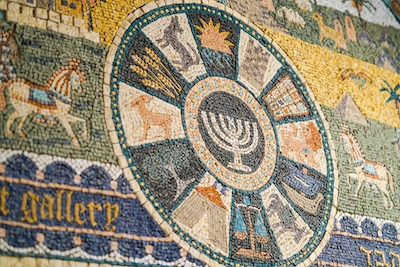Yesterday’s daf offered us a definition of the concept of ye’ush (despair), the standard that determines whether or not a lost object can be claimed by the person who finds it.
Rav Zevid said in the name of Rava: This is the principle of a lost item: Once (the owner) says: “Woe is me for the monetary loss,” he has despaired of it.
But how quickly after a loss does that despair kick in? That depends on how valuable the item is and how likely it is that someone might find it and return it to the original owner. The more valuable, and the more likely an object is to be returned, the longer it will take to feel despair and accept the monetary loss.
What makes a loss object likely to be returned? Thus far, the Talmud has been exploring specific identifying features that could help someone return an object to its original owner. But today, the Talmud turns to a different factor — where it was lost to begin with.

Help us keep Jewish knowledge accessible to millions of people around the world.
Your donation to My Jewish Learning fuels endless journeys of Jewish discovery. With your help, My Jewish Learning can continue to provide nonstop opportunities for learning, connection and growth.
According to Rabbi Shimon ben Elazar:
One who finds (a lost item) in a main thoroughfare or a large plaza, or in any place where the multitudes are found, these (items belong) to him due to that the owner despairs of them.
Let’s be honest — if you lose something at a music festival or a packed hockey game, or even in a crowded marketplace on market day, you aren’t getting it back. For Rabbi Shimon ben Elazar, knowing that you aren’t getting it back leads to despair that leads to a loss of legal ownership, which means that whoever finds it can keep it.
The Talmud next interrogates what kinds of crowds cause despair.
Where there is a majority of gentiles, but where there is a majority of Jews, no? Or perhaps, even where there is a majority of Jews, he also says this?
The statement is a bit opaque, so let’s break it down. The rabbis note that Rabbi Shimon ben Elazar thinks that if you lose things in a crowd, you despair of getting them back. But does he think that Jews despair of getting objects back only if they lose them in a majority non-Jewish crowd? Or do they also despair when they lose something in a majority-Jewish crowd?
After a very long back and forth, the Talmud ultimately concludes that Rabbi Shimon ben Elazar thinks that you can keep an object lost in a crowd of either non-Jews orJews. The Talmud doesn’t resolve the question of whether Rabbi Shimon ben Elazar’s opinion becomes the law, a topic taken up by medieval and modern religious authorities.
But today, I want to note how the Talmud weaves together issues of despair and religious difference. The Talmud doesn’t actually say that one religious community is better at picking up lost objects and returning them to their original owners. The issue of despair is not necessarily rooted in a specific reality, but in the kinds of feelings — of ownership, obviously, but also of security and belonging — that individuals have in particular situations.
And for better or for worse, the world of the rabbis was one where those kinds of feelings were dependent on whether they were in a crowd that shared their religious beliefs and practices or not. As the discussion of despair underlines for us, for the rabbis, those kinds of feelings had legal force. But it’s also worth remembering that the rabbis’ feelings do not have to be our feelings — which are shaped by our tradition, but also by our own life experiences. And those feelings too affect how the law is applied.
Read all of Bava Metzia 24 on Sefaria.
This piece originally appeared in a My Jewish Learning Daf Yomi email newsletter sent on March 23rd, 2024. If you are interested in receiving the newsletter, sign up here.



